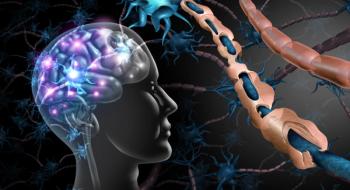
Surprising New Approach Could Change Autoimmune Disease Treatment
New research has revealed that this approach could aid in the treatment of autoimmune diseases, as well as help with diabetes, chronic pain and numerous other conditions.
New research has revealed that venom could aid in the treatment of autoimmune diseases, as well as help with diabetes, chronic pain and numerous other conditions.
Mandë Holford, PhD, associate professor at Hunter College, CUNY graduate school and research associate at the American Museum of Natural History, recently wrote a perspective piece that looked to expand the knowledge base about venom research to a broad scientific audience.
Published in the journal, Science, the research showed that venom has the power to transform organisms and transform lives when used in therapeutic applications. The commentary summarized findings in the venom field, looking at several new areas in which venom peptides are being investigated for therapeutic use, such as autoimmune diseases, brain tumors, and even new eco-friendly insecticides.
Key takeaways
“The main parameters were to outline the history of the venom field and describe opportunities and challenges for moving the field forward,” Holford says. “I think the key takeaway from anyone reading our piece would be that venomous organisms are more abundant than they thought (~15% of all animal biodiversity), found in all environments from deserts, oceans, jungles, and mountain tops. And in a surprising twist of nature, someone that kills and also be used to cure.”
She explains that venom can be used as a treatment for autoimmune diseases because the components that make up a venom arsenal are fast acting, specific, and very potent-all the ingredients you need for a successful drug.
Related:
“Taken as a whole, a venom cocktail would kill or impair the target, as it is designed to do. However, if you strip a venom cocktail down to the components, each has a specific molecular target that can be used to modulate cellular physiology,” Holford says. “I like to describe the venom arsenal as a cluster bomb-the venom is one huge bomb with all these small fine-tuned devices inside.”
Therefore, since diseases and disorders are generally caused by malfunctions in cellular physiology, having compounds like venom components that can act as molecular switches to turn the malfunctions on or off is a powerful tool for finding new treatments.
Venomous animals are not what most people think about when they think about treatments; however, Holford notes, in the case of autoimmune diseases, the first selective inhibitor for a known therapeutic target found in various autoimmune diseases is a compound found in a venomous sea anemone.
“The compound is a peptide that blocks the therapeutic target, Kv1.3, a specific potassium channel on T cells,” she says. “In addition to this peptide from a sea anemone, there are peptides from scorpions that also block Kv1.3. This is amazingly promising for understanding and manipulating the mechanics of autoimmune diseases.”
Gatekeepers
Additionally, ion channels such as potassium channel Kv1.3 are gatekeepers for cell signaling and cell trafficking that corresponds to downstream disease phenotypes and actions.
“Peptides like those discovered in scorpions and sea anemones are the keys to manipulating the gates,” she says.
In August, Holford and her co-authors co-chaired the first ever venom Gordon Research Conference, an event that brought together 106 researchers from 22 different countries and disparate fields from evolutionary biology to peptide chemistry, for high level scientific discussions to identify opportunities and challenges for moving the venom field forward.
“Ultimately, we want to understand, how venom evolved, the ecological drivers of venomous interactions, and determine how to harness the components found in venom arsenals to discover and develop new therapies for treating human disease and disorders,” Holford says.
Currently, the FDA) has only approved six venom-derived drugs but Holford and her fellow scientists in this study feel a greater investment could yield more therapies.
“I hope the study will put venom and venomous creatures on a new pedestal, one that elevates them from being agents of fear, to be being agents of hope,” she says.
Newsletter
Get the latest industry news, event updates, and more from Managed healthcare Executive.






















































